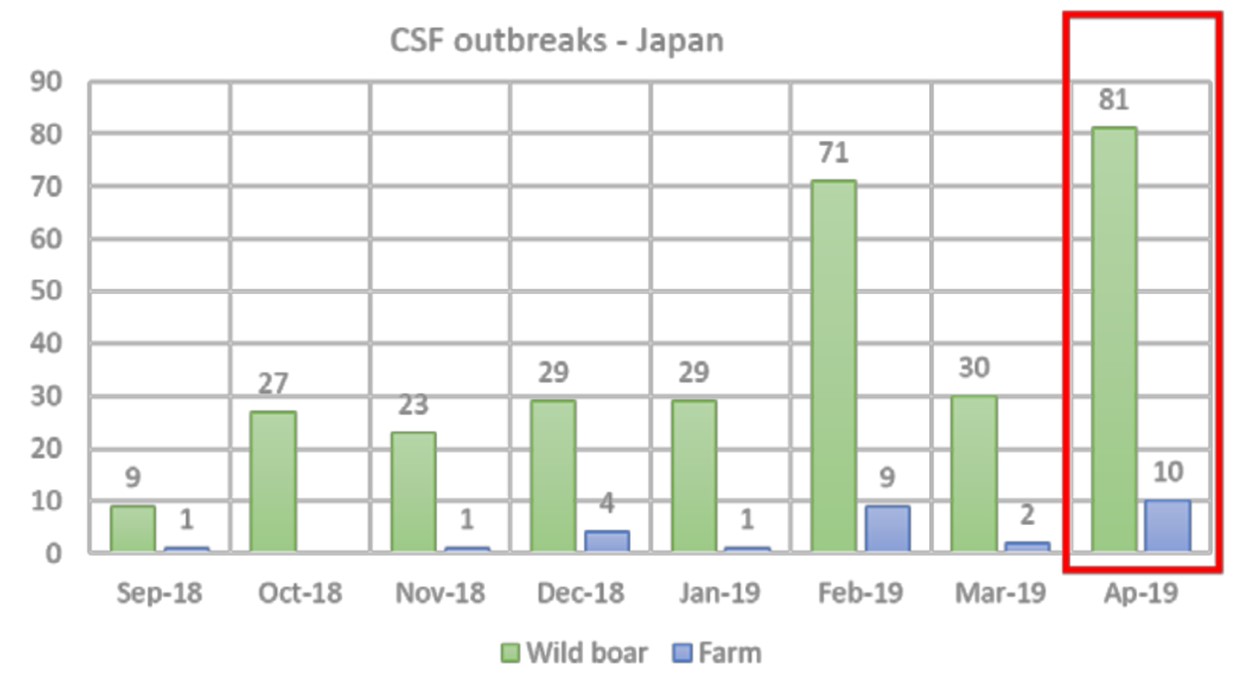



SHIC global disease report: classical swine fever
The Swine Health Information Centre and University of Minnesota team up to provide the latest run down on classical swine fever outbreaks throughout the global pig herd.The SHIC and University of Minnesota present the latest outbreaks of CSF in Japan and Brazil as part of the Swine Disease Global Surveillance Report. The aim of the report is to have a support system for near real-time identification of hazards that will contribute to the mission of assessing risks to the industry and ultimately, early detect, identify, or prevent occurrence of events, in partnership with official agencies, and with our international network of collaborators.
Japan
Japan has been fighting classical swine fever (CSF) since September 2018, when the virus was first discovered in wild boar in central Gifu prefecture. CSF has continued to spread through Japan’s domestic pig herd causing the depopulation of many farms. The total number of pigs culled for preventative reasons has reached 72,554 at 27 farms, according to the OIE. In March, Japanese authorities in Gifu prefecture announced strategies to orally vaccinate wild boar to prevent the spread of CSF. The vaccine strategy places vaccine-containing feed in the ground at 900 different locations monitored by cameras to see whether or not the feed is being eaten and by periodic capture of wild boar to assess vaccine status. Multiple rounds of this vaccine dispersement will occur with two more rounds in the summer and winter.
Similar vaccine strategy plans have also started in Aichi prefecture, including forests in Komaki. Aichi prefecture will disperse vaccine-containing feed to 60 locations in the cities of Komachi, Kasugai, and Inuyama.

Brazil
Since the confirmation of outbreaks in the province of Ceará in the northeast part of the country, the intensification of surveillance in the non-recognised CSF-free zone in Brazil has led to the detection of new suspected cases and the confirmation of new clinical cases of CSF, now also detected in the province of Piauí, bordering the province of Ceará. The monitoring system for pig haemorrhagic diseases in this zone is being revised in order to better adapt to the organisational conditions of pig production in the provinces located in this region for the purposes of establishing a more effective control/eradication programme.
Brazil has two zones regarding the sanitary status of CSF, the free zone that is compounded by 16 Brazilian states and includes more than 95 percent of the commercial pig production, and a non-free zone in the north of the country. The province of Piauí is not part of the CSF-free zone and the outbreak is more than 300 kilometres away from the boundaries of this zone. Still, it seems outbreaks are spreading southwestward what has increased industry concerns. Restrictive measures are already in place for the movement of animals and animal products between the CSF-free zone and the non-CSF-free zone. In the last follow-up report sent in December 2018, it was indicated that information on this disease would be included in the twice-yearly reports. However, in order to share more detailed and timely data, in addition to the new outbreaks in Piauí and other confirmed new outbreaks in Ceará since the last report, all new outbreaks in any of the provinces of the non-CSF-free zone will also be included in the follow-up reports of this event.








